Philips Hue Play Sync Box and Gradient Lightstrip can enhance the home theatre experience
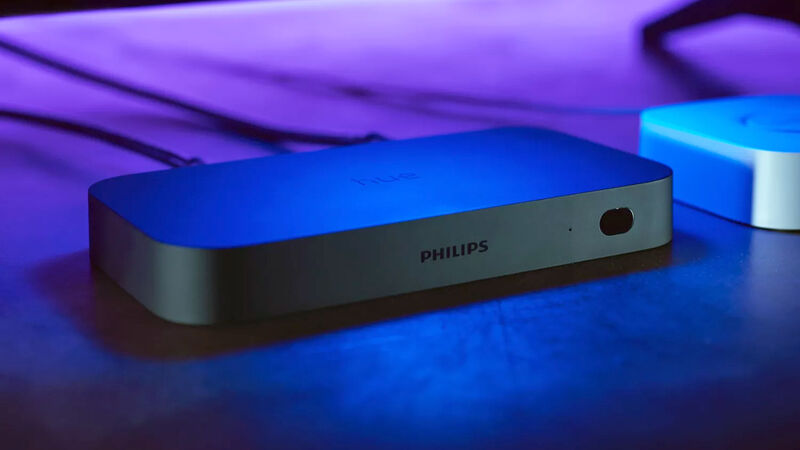
Philips Hue Play Sync Box. Pictures: Philips.
The Philips Hue Play HDMI Sync Box married with the Hue Gradient Lightstrip is a simple and effective way of improving your home theatre experience. This small little box can sync/control your Hue lights to content playing on TV. The Sync Box allows users to sync Hue lights to their home theatre experience and can be placed between any streaming box, gaming console, Blu-ray player, or entertainment system and a television. I’ve been using the Sync Box for the last month along with the Gradient Lightstrip to see if it’s worth the hefty price tag.
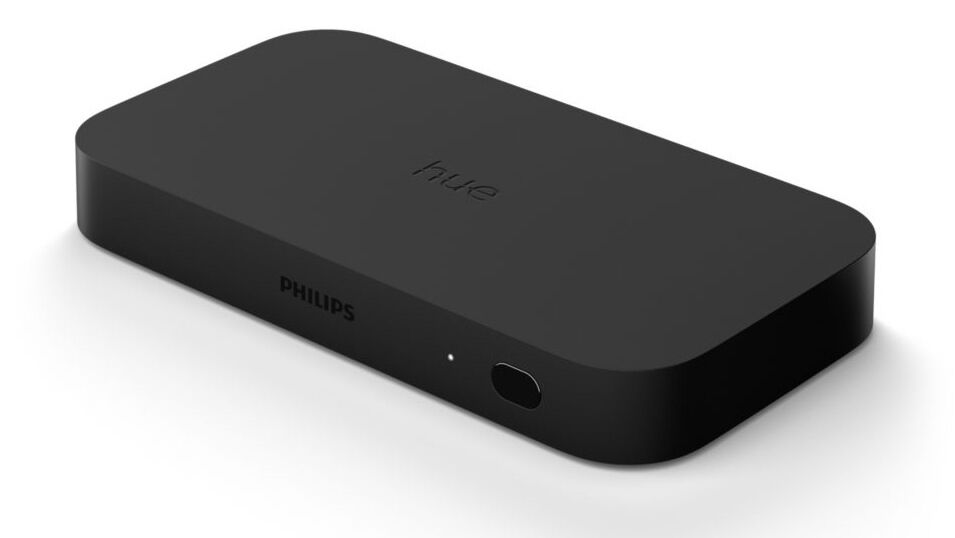
The HDMI Sync Box is a fairly non-descript black box that features four HDMI 2.0 inputs that are compatible with everything from an Apple TV to the latest PS5 gaming console with full support for 4K Ultra HD. It’s important to note that while the Sync Box can seamlessly simulate the light and colours on the screen via the Gradient Light strip on the back of your TV using any of the four HDMI inputs, it can’t work with any of the smart TV apps or TV channels.
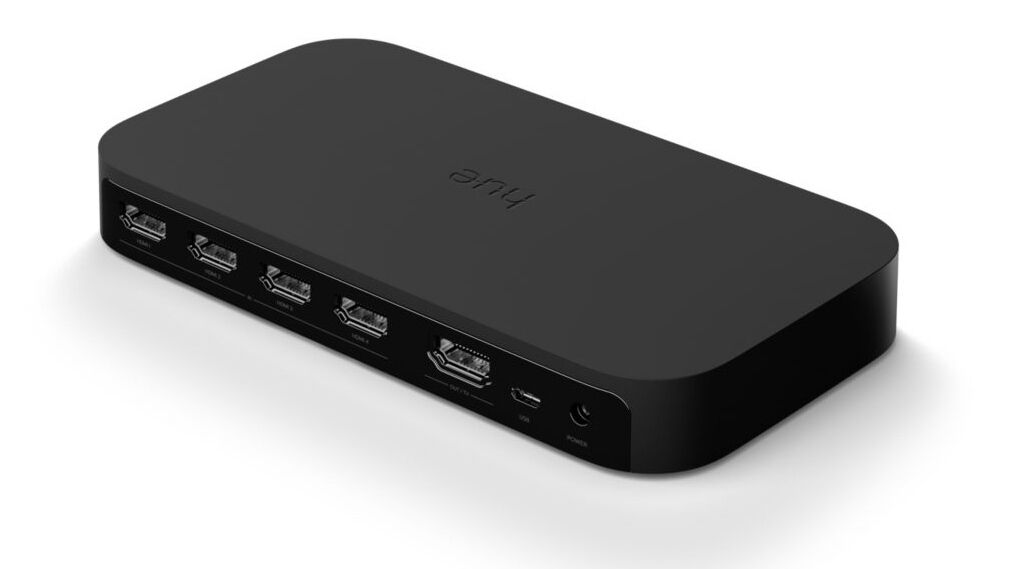
The Sync Box essentially maps zones of the image onscreen to different lights and the Gradient Light strip allows full control over colour and brightness along the length of the strip. I installed the 65-inch version of the lightstrip on my TV using the supplied plastic brackets that have sticky pads on the back. It only took a few minutes and it was easy to do a neat and tidy installation. The lightstrip fits along the sides and top which worked perfectly for me since my TV sits on a stand, but I’m not sure how it would look with a wall-mounted TV with little light coming from the bottom.
Ideally, you need a blank wall behind the TV to allow the ambient light from the strip to illuminate properly. Also, an off-white wall is best as a dark colour will only absorb the light and colour.
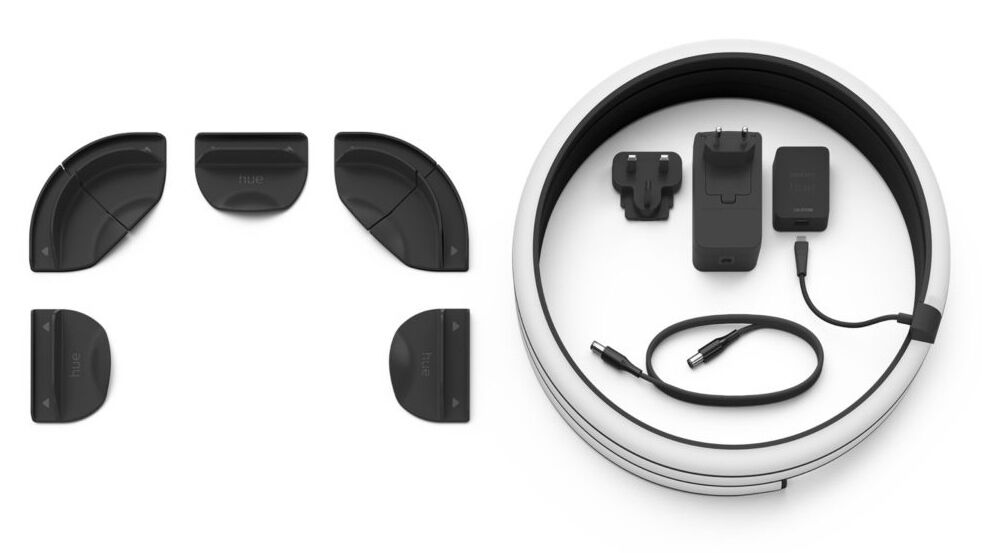
To connect the Gradient Lightstrip without using up additional power supply, the Sync Box's power brick cleverly includes two additional power outputs.
The Sync Box has automatic HDMI switching, but I found it didn't work reliably. This means that in order to change inputs and adjust the brightness of the lights, you will have to use the Philips Hue app. For testing, I used an Apple TV and Nintendo Switch in dock mode and both worked well.
The Sync Box does have several options in the Hue app including the ability to create entertainment areas which is essentially a grouping of lights. You can create several of these, so for example, you could have one for gaming and another for watching movies. In the Sync section of the app, you can toggle modes from video, music and game as well as adjust the intensity or how aggressively it synchronises with the TV input. You can also adjust brightness and change between inputs and turn sync on or off.
Under the advanced section, you can enable ARC bypass and Dolby Vision enhanced compatibility. I had to enable the latter on an LG C1 for the sync to work with my Apple TV with Dolby Vision turned on.
The Sync Box supports 4K at 60Hz but not 4K at 120Hz. This isn't a problem for most but it does affect PS5 and Xbox Series X users who want to play compatible games at the maximum resolution and frame rates.
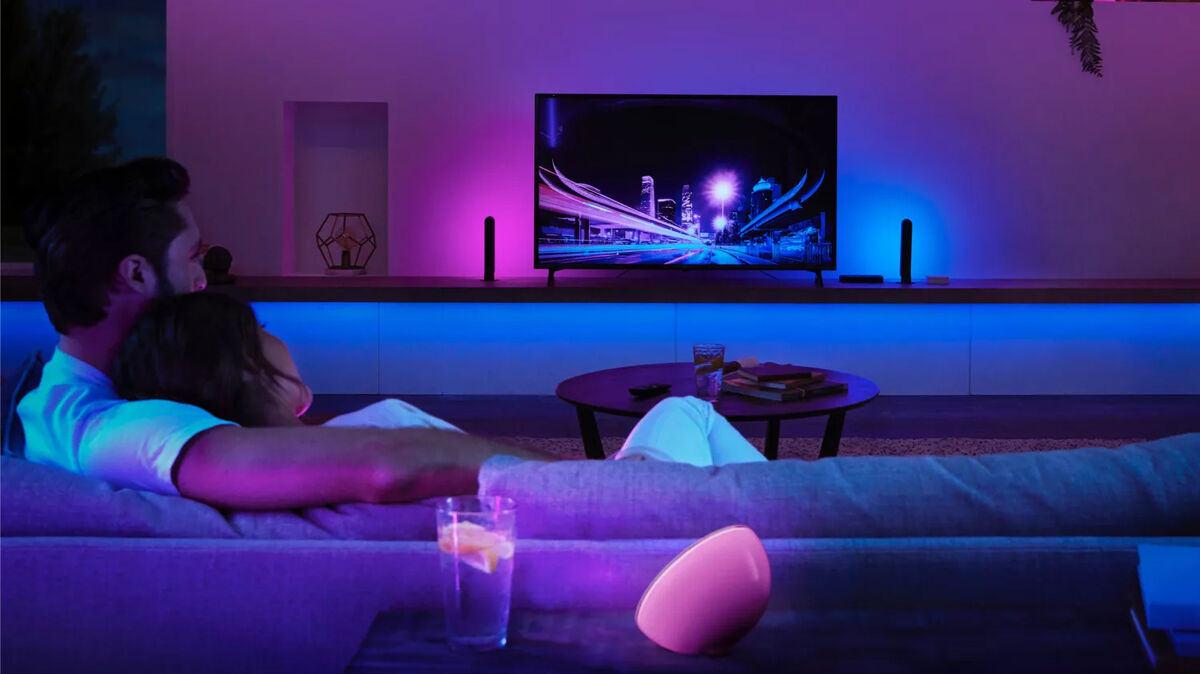
The Hue Play Sync Box offers a stunning ambient light effect, with splashes of colour that are in sync with the images on your TV. Dark moody scenes will have a dull and subtle light while more dramatic scenes will be bright and colourful to match the energy and action of the movie you're watching. This all adds to the enjoyment and immersion and I found it wasn’t just in dramatic action moves but also in slow-moving dramas.
What's really impressive is how reactive the lights are to what's happening on the screen with little to no latency discernible. You can decrease the intensity to reduce flicker and smoothen the transitions between colour changes and light intensity. For my comfort, I set the overall brightness to between 30% and 45%, depending on the amount of ambient light already in the room. Of course, your mileage will vary.
While I enjoyed the experience, I didn’t feel I wanted it on all the time either. I certainly didn’t need dramatic lighting while watching the news.
The Philips Hue Play HDMI Sync Box is impressive and adds an extra layer of immersion to a good home theatre setup. It works great whether you’re watching a movie, a music concert or playing a game. It’s not perfect and it would be nice to see support for HDMI 2.1 in the future, but I don’t think that’s a dealbreaker. Both the lightstrip and Sync Box are worth a look especially, If you've got a high-end home cinema setup and you're looking for something new to impress friends and family.
Philips Hue Play HDMI Sync Box - €240
Philips Hue Gradient Lightstrip TV 65-inch - €230










